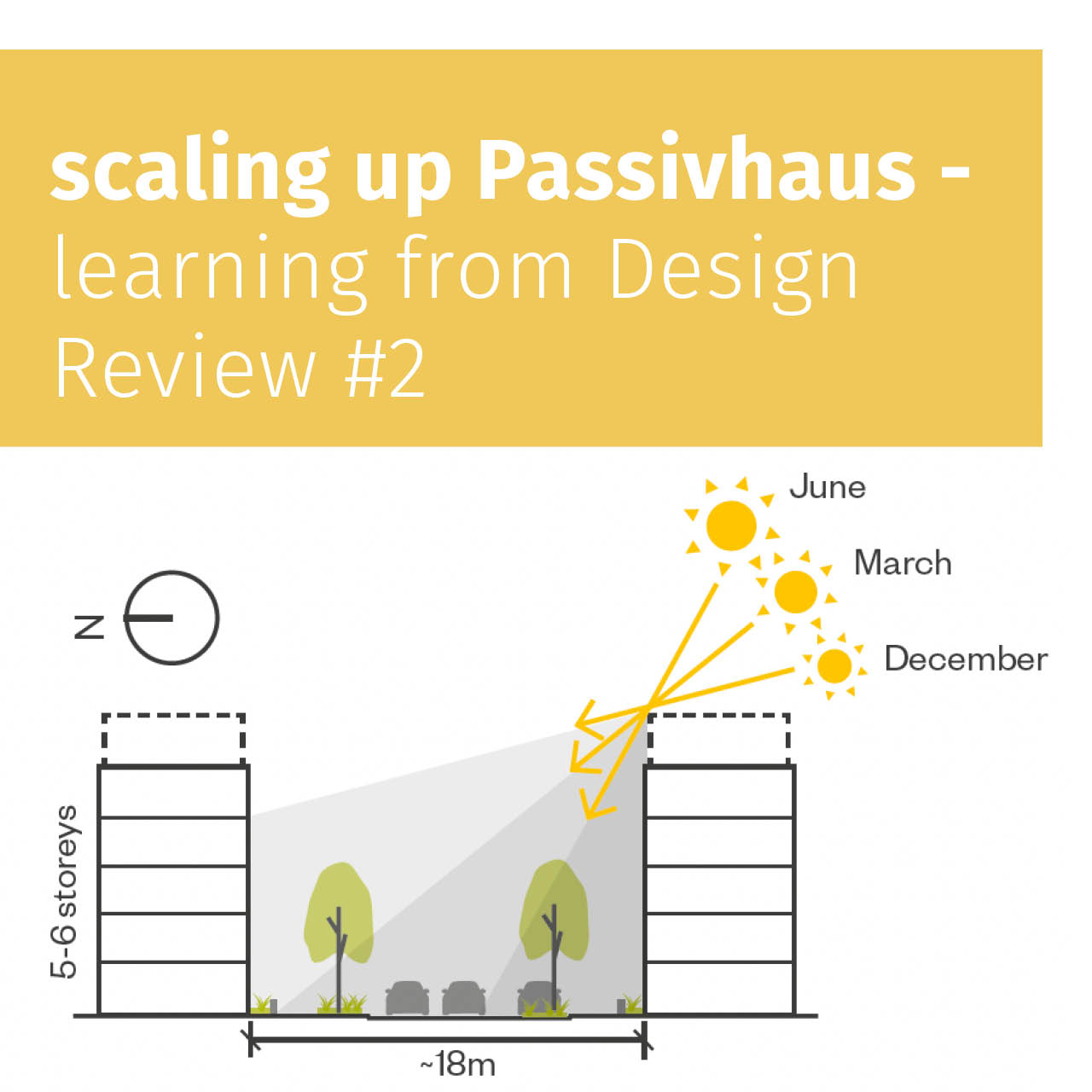
Over the last decade the use of the Passivhaus standard in housing design has been deployed in larger projects as clients look to deliver net zero carbon ready homes with minimal heating bills. This influences design approaches from the outset and needs careful integration in the proposed urban form.
In 2012 I qualified as a Passivhaus designer. I wanted to reset my technical knowledge and perhaps overcome a residual fear of U value calculations from Architecture School exams. After studying with WARM in Plymouth I could relish being able to calculate a window U value from scratch. Whilst this isn’t in the realm of knowledge you ordinarily need – as there are some good Passivhaus consultancies, it can be useful to understand the perameters.
This understanding has been increasingly useful when chairing Design Reviews where proposals for housing are targetting the Passivhaus standard. As the demands of Passivhaus need to be integrated whilst still shaping positive streets and spaces. As James Halsall at Mae notes in his description of Agar Grove (a Passivhaus standard estate regeneration in Camden, London); “Reconciling Passivhaus design with high density urban design is challenging. The simple form factor, good solar aspect and minimal overshading are not always compatible with urban design principles of tightly knit networks of streets or a considered response to the local urban grain.”
For an accessible overview Levitt Bernstein’s generous Easi Guide to Passivhaus Design (for medium density housing projects) describes the key features of a Passivhaus design. These include a highly insulated and airtight buildings with high performance triple glazed windows that are ventilated using a mechanical ventilation with heat recovery (MHVR). Targeted U values are much better than current UK Building Regulations and require thicker walls, floors and roofs. Modelling of energy performance needs to happen early on so that design decisions can shape buildings that have a compact form. Designs also need maximise the use of south facing orientation to capture winter solar gains whilst managing overheating from east/west orientation. Projecting balconies can provide useful shading.
Mid Devon DC brough their proposal for 70 sustainable and affordable homes at Post Hill, Tiverton to Design West’s South West Design Review Panel. These homes are designed to the Passivhaus standard so that they can be ‘net zero ready’. To achieve Passivhaus the design team used short terraces and semis to maintain a compact form. The streets mostly face southeast with a small number of homes facing west overlooking an important landscape corridor and uses special corner types between.
A project for 52 Passivhaus homes by Mikhail Riches at the Uplands in Nailsea North Somerset was approved early in 2021 having been to the Design West North Somerset Design Review Panel. Like the Post Hill project this uses shorter south facing terraces and semis to create compact forms. As at Goldsmith Street end elevations are designed to have a positive street presence.
Mikhail Riches award winning Goldsmith Street for 100 homes also orientates homes north south following the existing street pattern. Terraces run the length of the street. The layout replicates the feel of a traditional terrace and subtly integrates Passivhaus House orientation. Homes have different north and south facing street interfaces with no set back to the north – whilst all house types all have their dinning spaces to the south whether they face gardens or streets. The roof section is cut to allow the low winter sun to reach south facing elevations.
Passivhaus Trust – The UK Passivhaus Organisation
https://www.passivhaustrust.org.uk/what_is_passivhaus.php
International Passive House Association
https://passivehouse-international.org
This is one of a series of posts featuring learning from Design Review and reflecting on multidisciplinary working.
… … …